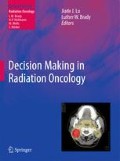Abstract
-
Hepatocellular carcinoma (HCC) is the 5th most common cancer worldwide, with the third highest incidence of cancer-related death. In Asia and Africa, chronic hepatitis B viral infection is the leading cause of HCC, while hepatitis C viral infection predominates in Europe, Japan, and North America.
-
Common sites of metastasis include other parts of the liver, abdominal lymph nodes, peritoneum, bone, and lung.
-
Approximately 60–80% of patients with HCC have underlying cirrhosis of the liver. High-risk patients are screened with liver ultrasound and alpha-fetoprotein (AFP) levels for 6–12 months.
-
HCC patients are often asymptomatic; when symptoms develop, they often include upper abdominal pain, weight loss, malaise, jaundice, and anorexia.
-
Imaging studies can often confirm the diagnosis of HCC, without a tissue biopsy, because these lesions are hypervascular and will demonstrate a classic pattern with intense uptake on arterial phase scanning, followed by contrast washout in the delayed venous phase.
-
A nodule in the 1- to 2-cm range can meet criteria for HCC if it demonstrates classic arterial enhancement on two imaging modalities such as triphasic computed tomography/magnetic resonance imaging (CT/MRI). If a lesion >2 cm shows classic enhancement on one modality, that is sufficient. A tissue biopsy should be considered if there are no classic imaging findings.
-
At least 12 staging systems exist for HCC (e.g., tumor, node, metastasis [TNM], Okuda, Barcelona).
-
Surgical resection or transplantation off ers the best chance of cure for HCC, but most patients are not eligible. Transplant series show 4-year recurrence-free survival rates in the range of 92%; resection series show 5-year survival rates up to 70%, but most patients develop recurrence.
-
Strategies for bridge to transplant or palliation include embolization (chemo-/radio-/or bland), radiation therapy (3D-conformal radiation including image-guided intensity-modulated radiation therapy, stereotactic body radiosurgery, or protons/charged particles) and targeted therapies (sorafenib).
Access this chapter
Tax calculation will be finalised at checkout
Purchases are for personal use only
Preview
Unable to display preview. Download preview PDF.
Author information
Authors and Affiliations
Editor information
Editors and Affiliations
Rights and permissions
Copyright information
© 2011 Springer-Verlag Berlin Heidelberg
About this chapter
Cite this chapter
Hoffe, S. (2011). Hepatocellular Carcinoma. In: Lu, J., Brady, L. (eds) Decision Making in Radiation Oncology. Medical Radiology(), vol 0. Springer, Berlin, Heidelberg. https://doi.org/10.1007/978-3-642-13832-4_15
Download citation
DOI: https://doi.org/10.1007/978-3-642-13832-4_15
Publisher Name: Springer, Berlin, Heidelberg
Print ISBN: 978-3-642-12462-4
Online ISBN: 978-3-642-13832-4
eBook Packages: MedicineMedicine (R0)

